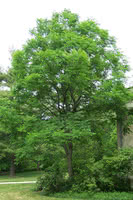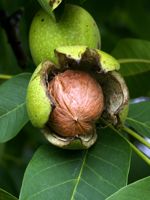Mon-Fri 9am - 5pm Mountain time
Kentucky Coffeetree vs Carpathian English Walnut
Gymnocladus dioicus
Juglans regia Carpathian
NOT AVAILABLE THIS SEASON - MIGHT RETURN
NOT AVAILABLE THIS SEASON - MIGHT RETURN
The Kentucky Coffeetree has the largest leaves of any native tree in North America! In the summer, its large green canopy provides shade. While in the winter, its leathery bean pods act as a decorative element against the sky as they rattle in the wind. Beautiful year-round, this tree is an elegant addition to any landscape.
Carpathian English Walnut is a great shade tree or a fantastic addition to a food garden. The taste is described as having a full flavour with a hint of sweetness and butterscotch. They are great for fresh eating, cooking, and baking. Thin shelled nuts split right down the center, making them easy to crack. Harvest ranges from late September to early October.
It is known for being highly productive and more cold hardy than other English Walnut varieties.
Carpathian English Walnut is considered to be self pollinating but planting with a second variety will result in greater yields. It can be cross pollinated with Black Walnut and others.
Kentucky Coffeetree Quick Facts
Carpathian English Walnut Quick Facts
Toxicity: Uncooked pods are toxic to humans

